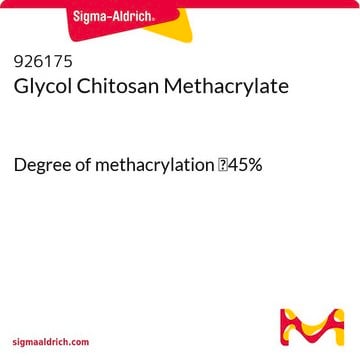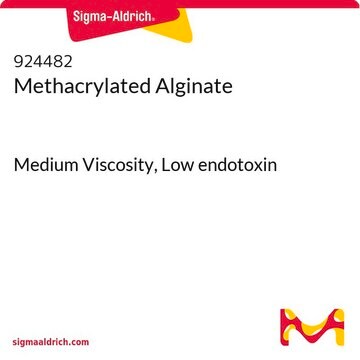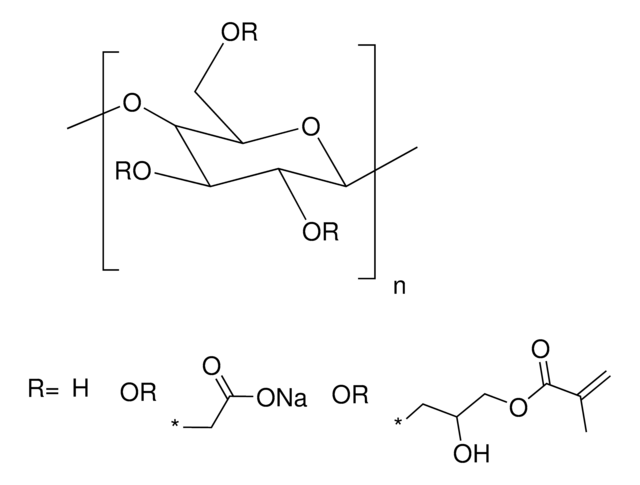926167
Chitosan glycidyl methacrylate
Degree of methacrylation ~20%
Synonyme(s) :
Chitosan acrylate, Chitosan methacrylate, Methacrylate grafted chitosan, Methyl methacrylate modified chitosan
About This Item
Produits recommandés
Niveau de qualité
Température de stockage
2-8°C
Chaîne SMILES
CO[C@H]1[C@@H](O)[C@@H](N)[C@H](O[C@H]2[C@@H](O)[C@@H](NC(C)=O)[C@H](C)O[C@@H]2CO)O[C@@H]1COCC(O)COC(C(C)=C)=O
Catégories apparentées
Application
Code de la classe de stockage
11 - Combustible Solids
Classe de danger pour l'eau (WGK)
WGK 3
Point d'éclair (°F)
Not applicable
Point d'éclair (°C)
Not applicable
Certificats d'analyse (COA)
Recherchez un Certificats d'analyse (COA) en saisissant le numéro de lot du produit. Les numéros de lot figurent sur l'étiquette du produit après les mots "Lot" ou "Batch".
Déjà en possession de ce produit ?
Retrouvez la documentation relative aux produits que vous avez récemment achetés dans la Bibliothèque de documents.
Notre équipe de scientifiques dispose d'une expérience dans tous les secteurs de la recherche, notamment en sciences de la vie, science des matériaux, synthèse chimique, chromatographie, analyse et dans de nombreux autres domaines..
Contacter notre Service technique






